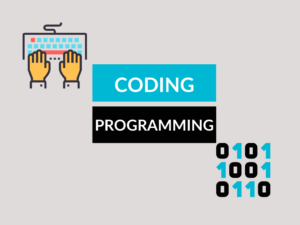White Box vs Black Box Testing
White Box and Black Box testing are two important software testing techniques used to identify defects and ensure the quality of software. In this article, we will explore the differences between these testing methods and their applications.
What is White Box Testing?
White Box testing, also known as Clear Box or Glass Box testing, is a software testing technique that examines the internal structure and workings of an application. This testing approach requires knowledge of the internal code, architecture, and implementation details.
Examples of White Box Testing:
- Unit Testing: Tests individual modules or components of the software.
- Integration Testing: Validates the interaction between different modules.
- Code Coverage Testing: Measures the percentage of code covered by test cases.
- Path Testing: Examines all possible paths within the software.
Uses of White Box Testing:
- Helps in identifying vulnerabilities in the code.
- Ensures the correctness of individual components.
- Aids in optimizing the code performance.
- Facilitates debugging and error localization.
What is Black Box Testing?
Black Box testing is a software testing technique that focuses on the functionality of the application without considering the internal code structure or implementation details. Test cases are designed based on the software requirements and user perspectives.
Examples of Black Box Testing:
- Functional Testing: Verifies that the software functions as expected.
- Regression Testing: Ensures that new changes do not introduce defects in previously working functionality.
- Usability Testing: Evaluates the user-friendliness of the software.
- Compatibility Testing: Tests software behavior across different platforms and environments.
Uses of Black Box Testing:
- Verifies the compliance of the software with user requirements.
- Identifies defects in the user interface or external behavior.
- Safeguards against biased testing influenced by internal knowledge or assumptions.
- Allows for independent testing by individuals without programming knowledge.
Differences Between White Box and Black Box Testing:
| Difference Area | White Box Testing | Black Box Testing |
|---|---|---|
| Focus | Internal code structure or implementation details | Functionality and behavior from an external perspective |
| Knowledge Requirement | Requires programming knowledge and access to the source code | Does not require programming knowledge |
| Test Case Design | Based on the understanding of the internal workings | Based on software requirements and user perspectives |
| Testing Stage | Usually performed during the development stage | Performed during various stages of the software development life cycle |
| Testing Granularity | Focuses on individual components or modules | Tests the software as a whole |
| Testing Objectives | To ensure the correctness of individual components | To validate the overall functionality and behavior |
| Testing Bias | May be influenced by internal assumptions or knowledge | Avoids biased testing by focusing on external perspectives |
| Test Efficiency | Provides high efficiency in detecting defects | May have lower efficiency due to limited knowledge of internal workings |
| Skill Requirement | Requires advanced programming and system architecture skills | Can be performed by individuals without programming knowledge |
| Test Reusability | Test cases can be reused for future testing cycles | May require redesigning of test cases for each testing cycle |
Conclusion:
In summary, both White Box and Black Box testing are vital techniques for ensuring software quality. While White Box testing focuses on the internal structure and code of the software, Black Box testing emphasizes external functionality and behavior. The choice between these two methods depends on the testing objectives, available resources, and skill sets of the testing team.
People Also Ask:
Q: What is the main goal of White Box testing?
A: The main goal of White Box testing is to ensure the correctness and reliability of individual components through the examination of internal code and structure.
Q: Is Black Box testing sufficient to ensure software quality?
A: Black Box testing alone may not be sufficient to ensure software quality as it primarily focuses on external functionality and behavior. Combination with other testing techniques is recommended.
Q: Can White Box testing detect all defects?
A: While White Box testing can efficiently detect defects at the component level, it may not identify issues related to external factors or requirements not reflected in the internal code.
Q: Which testing technique is more suitable for end-to-end testing?
A: Black Box testing is more suitable for end-to-end testing as it evaluates the software as a whole, considering all input-output scenarios and user interactions.
Q: Can White Box testers perform Black Box testing?
A: Yes, White Box testers can also perform Black Box testing as it does not require extensive programming knowledge. However, Black Box testers may find it challenging to perform White Box testing due to the need for programming skills.



